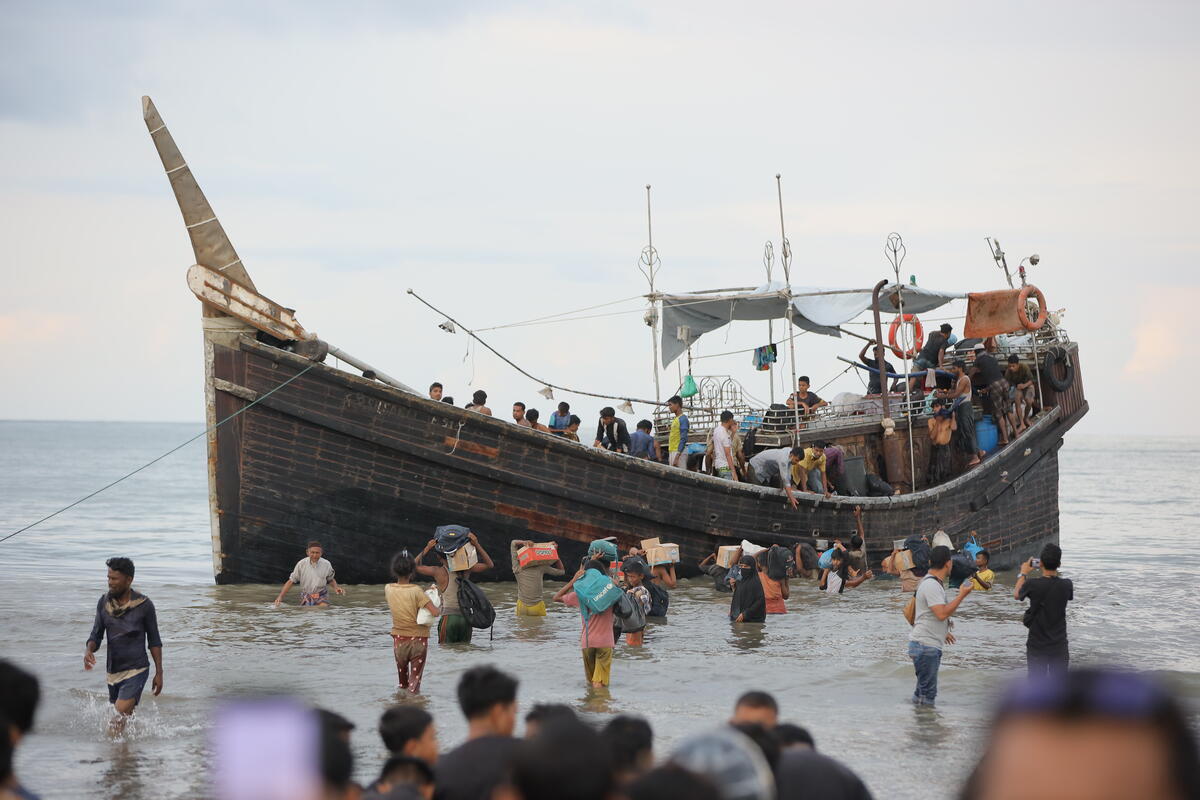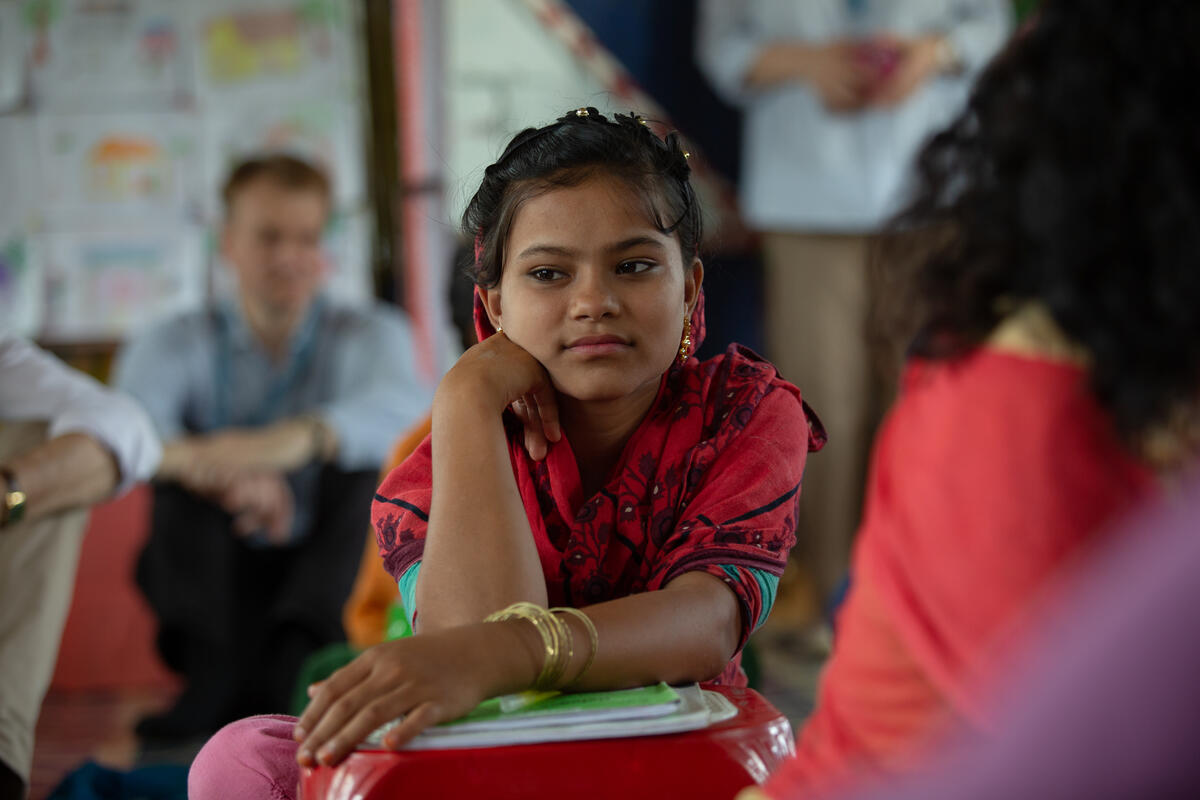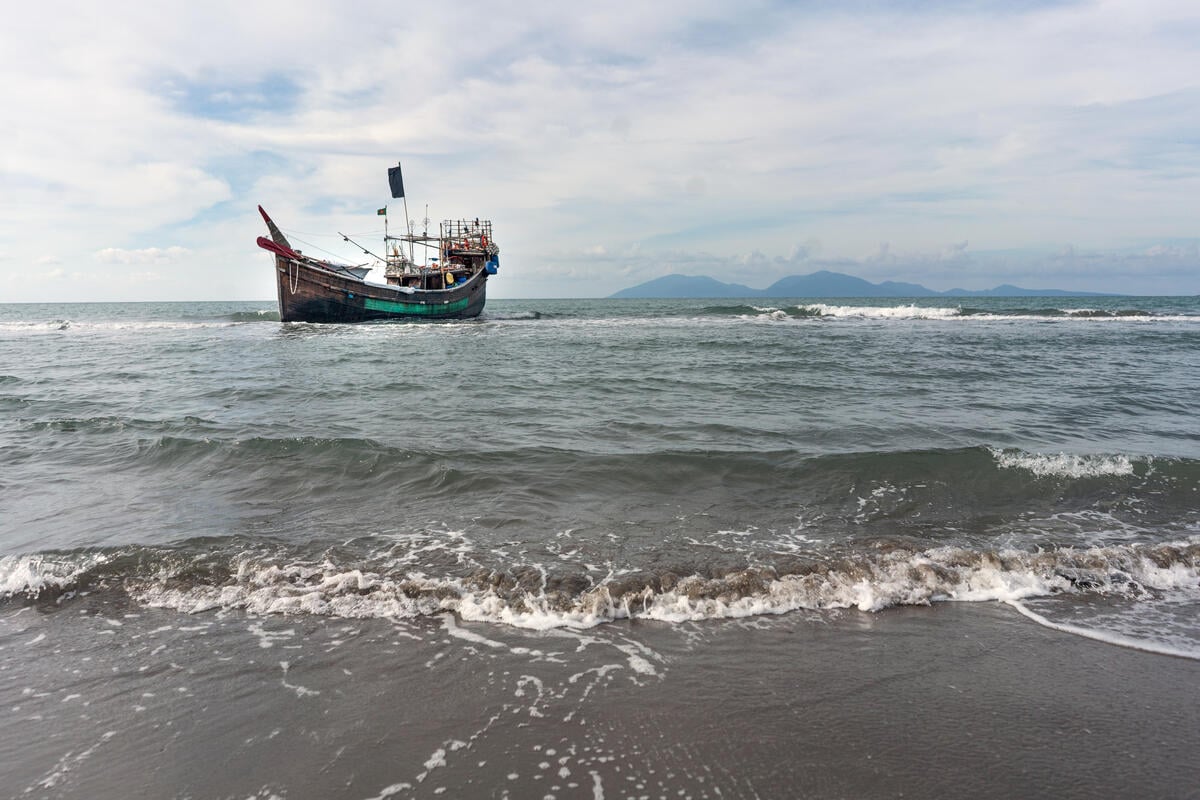Myanmar: UNHCR builds houses, peace of mind for Cyclone Nargis victims
Myanmar: UNHCR builds houses, peace of mind for Cyclone Nargis victims

KANASO NGU VILLAGE, Myanmar, July 28 (UNHCR) - In the horrible trail of destruction left by Cyclone Nargis two years ago, Daw Pyu was left scavenging for any scrap material she could cobble together to put some sort of a roof over her head.
"We really needed help after our terrible experience," says the 50-year-old widow. "I did not have anything except a UNHCR blanket to keep me warm when it rained."
Fast forward to today and, thanks to UNHCR, Daw Pyu, her son and daughter are living comfortably in a roomy house typical of the local construction -- a thatched roof and bamboo-mat walls on a wooden frame. It stands on stilts above the floodplain of the Irrawaddy Delta in Bogale Township, where more than 10,000 people lost their lives to Nargis, one of the 10 deadliest cyclones on record, and certainly the worst natural disaster ever to hit Myanmar.
Recalling the horrors of being left homeless by Cyclone Nargis, which hit on 02 May, 2008, Daw Pyu looks around her living area and kitchen and now says: "I could not have believed that I would ever own such a nice house in my life."
Right after Nargis, she says, it was impossible to find drinking water, plagues of mosquitoes bred around the shattered houses, and there was no way to cook a hot meal. Once they built a makeshift shelter, it wasn't even weatherproof as the monsoon rains continued.
"We could not even sleep with peace of mind," she says, "as we were worried that the rain and wind would destroy our fragile shelter."
The UN refugee agency moved into the delta quickly with emergency relief -- plastic sheeting, blankets, mosquito nets, cooking pots, jerry cans -- followed later by homes for the most vulnerable, like Daw Pyu. UNHCR also helped the local authorities issue national registration cards. These allow villagers to obtain public services and travel without securing permission of the village head.
UNHCR emergency assistance went to more than 400,000 people (some 85,000 families). In addition, the UN refugee agency gave 8,800 families construction materials and other help to build homes under programs that have contributed about US$8 million since the cyclone.
Daw Pyu's house was not an outright gift, but was a way to help her family get back on their feet. As they helped build it, they were paid daily wages and learned carpentry skills that will help them earn a living in the future in an area where many depend on fishing and farming.
"Their participation in the project gave them a sense of ownership," says Kyaw Thu Lwin, UNHCR field assistant in Bogale.
And acquiring the house on their three acres of land has given Daw Pyu's family immeasurable contentment.
"We do not need to worry about shelter anymore when there is wind and rain," she says. "With peace of mind, we can now farm our land more, bringing more income."
And dream about branching out into different crops. With the new national registration card issued to them by government authorities with UNHCR's help, one of Daw Pyu's children muses: "We could apply for a farming loan from the bank."








